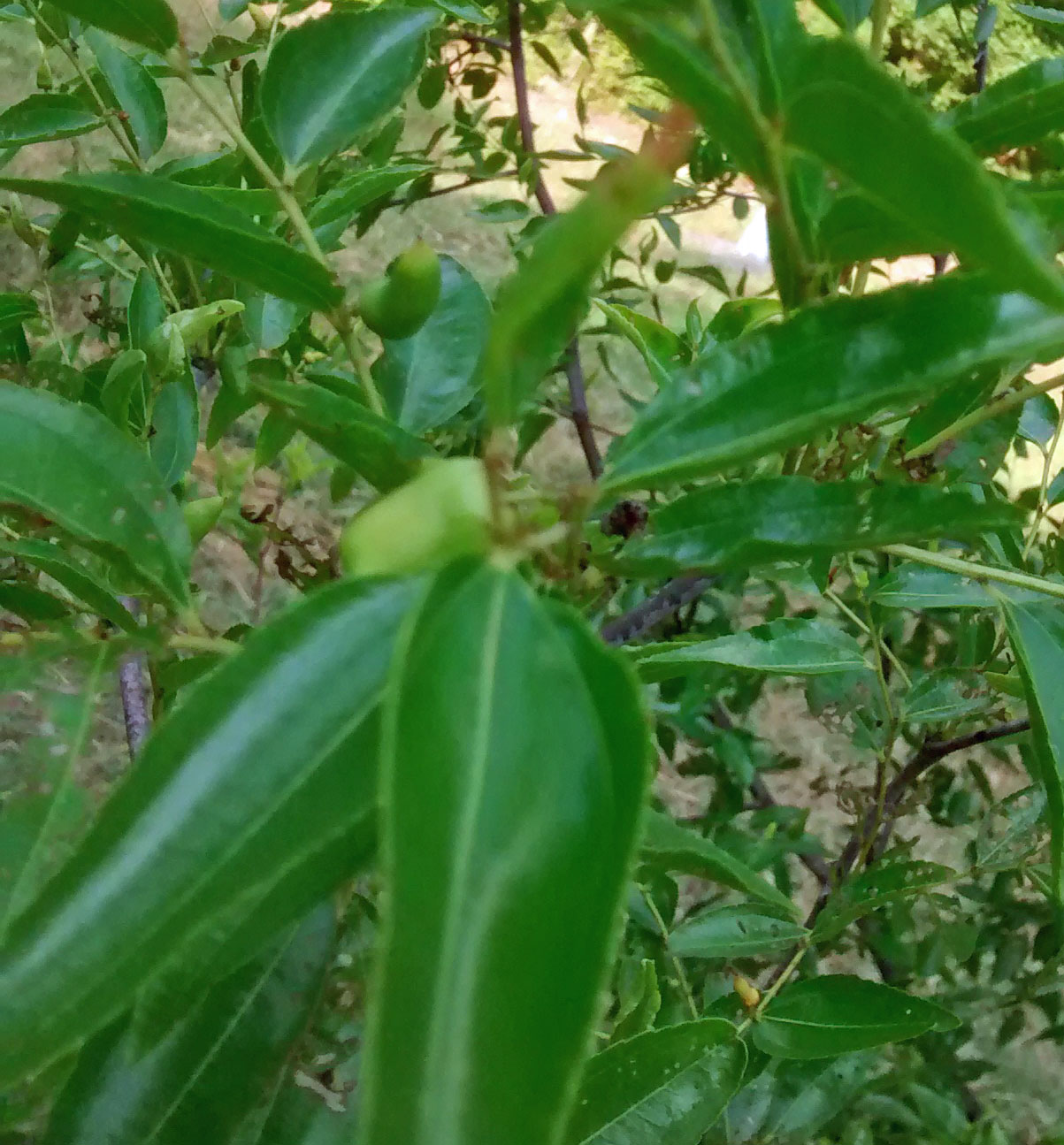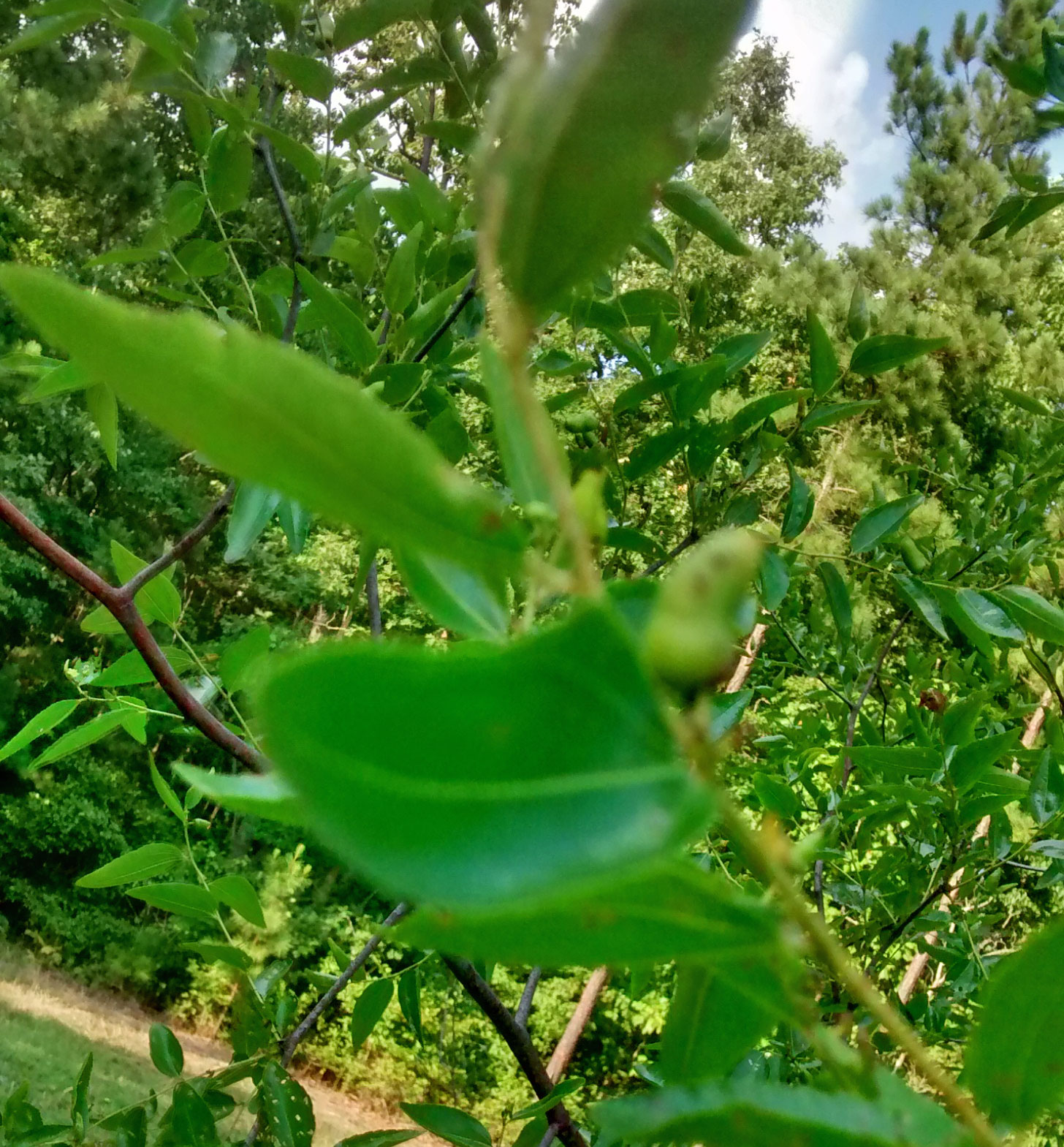-
If you are posting pictures, and they aren't posting in the correct orientation, please flush your browser cache and try again.
Edge
Safari/iOS
Chrome
You are using an out of date browser. It may not display this or other websites correctly.
You should upgrade or use an alternative browser.
You should upgrade or use an alternative browser.
Jujube varieties for deer - Transfered from QDMA Forum
- Thread starter yoderjac
- Start date
Catscratch
5 year old buck +
^^^ those look good. My Tigertooth is still blooming at the moment, I haven't found anything that looks like an immature fruit yet. The one fruit it made last yr disappeared right before I thought it was going to ripen...
yoderjac
5 year old buck +
Same thing happened to me last year. You can see the immature fruit in a previous picture in this thread from last year. Later in the year when I looked they were gone. I'm not sure if the tree aborted them before they got ripe or if birds ate them. This year I have a lot more of them. I guess time will tell...
Thanks,
Jack
Thanks,
Jack
yoderjac
5 year old buck +
Finally! I'm getting fruit from my Tigertooth this year!
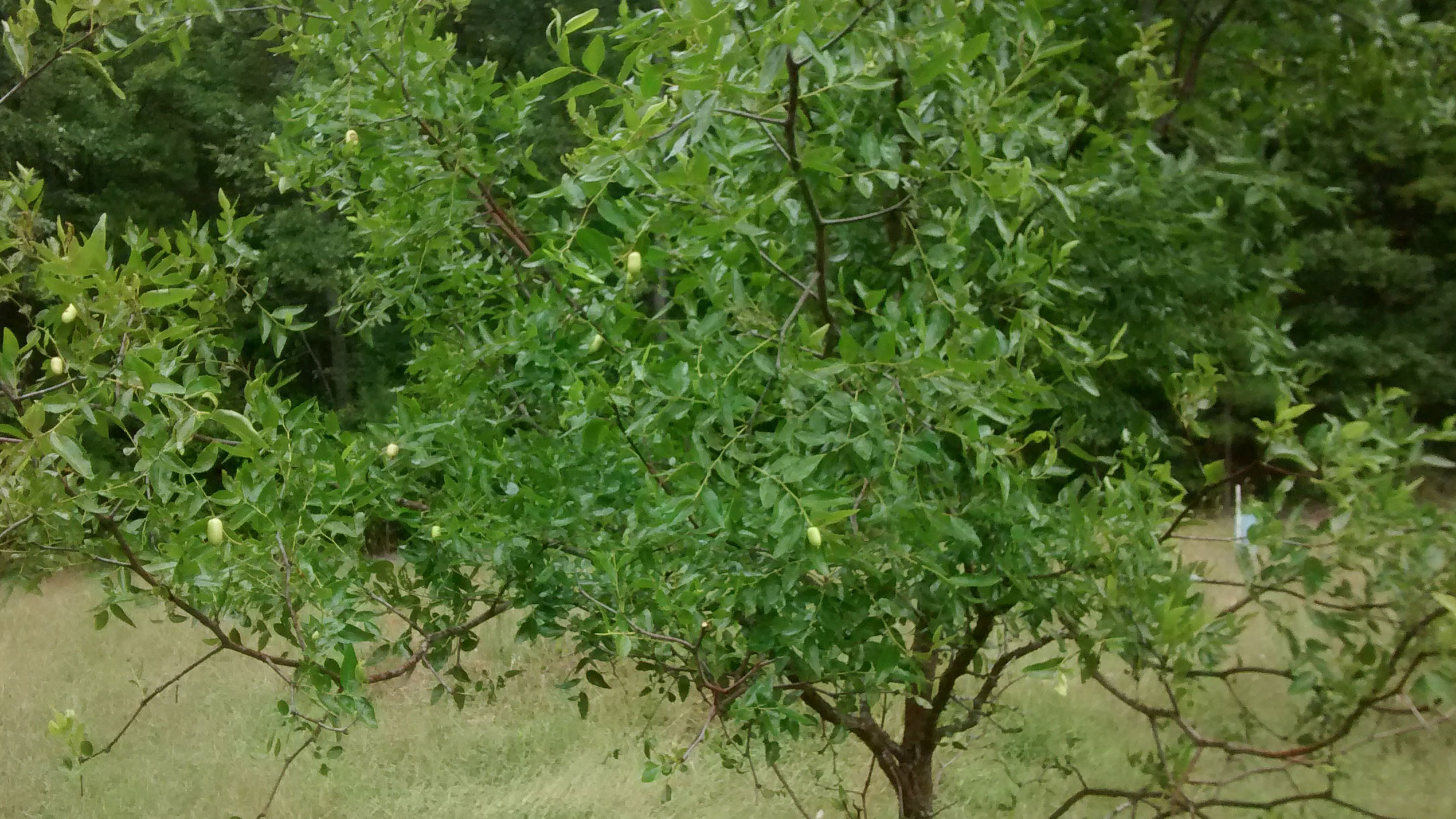
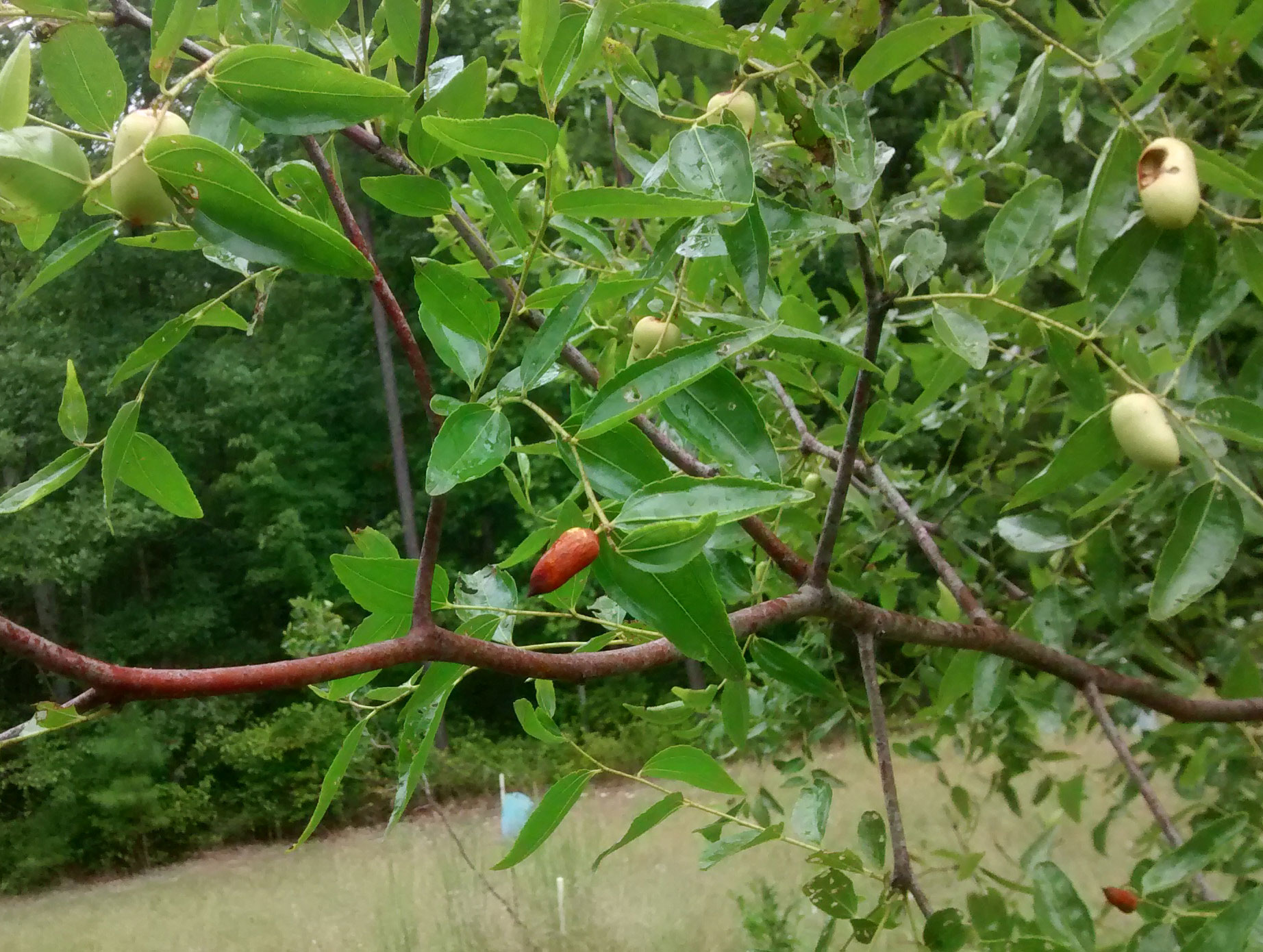
You can see a couple maturing and turning red in this picture. I've got 3 of the trees, all Tigertooth that have some fruit on them. I'm looking forward to the next few year seeing how deer relate to these.
Thanks,
Jack


You can see a couple maturing and turning red in this picture. I've got 3 of the trees, all Tigertooth that have some fruit on them. I'm looking forward to the next few year seeing how deer relate to these.
Thanks,
Jack
yoderjac
5 year old buck +
Well, when I planted these trees I was experimenting with them for deer. Deer certainly like them. I found several branches broken off this hear and was blaming deer for somehow pawing the branched down. I hunted a stand the other day and found the culprit:
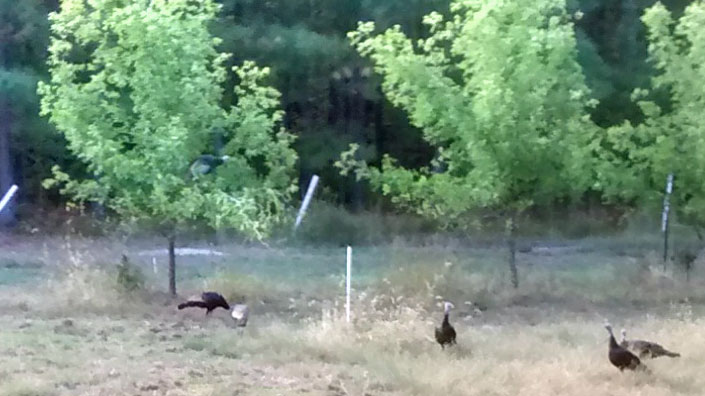
They were at first jumping with a flap or two to get the fruit off lower branches. They would then fight over it. Finally, as you see in the lower right of the left most tree, they flew up into the tree. I'm guessing this is how branches broke.
Thanks,
Jack

They were at first jumping with a flap or two to get the fruit off lower branches. They would then fight over it. Finally, as you see in the lower right of the left most tree, they flew up into the tree. I'm guessing this is how branches broke.
Thanks,
Jack
yoderjac
5 year old buck +
Someone asked in a PM how long it took these trees to fruit. It looks like early in this thread I posted that they were about 4 years old in 2016. Then in this thread it looks like it was 2017 when I posted a pic of the first fruits. It was not a heavy crop, but you can see from the pictures up in this thread about how much fruit I got in 2017. I'm not sure how old the bare root trees were when I planted them. They came from Just Fruits and Exotics in Florida and are tigertooth variety. It is my understanding that some varieties will not fruit in my area because of the higher humidity. Evidently they like hot dry summers. However, tigertooth will clearly fruit in my area.
Thanks,
Jack
Thanks,
Jack
Catscratch
5 year old buck +
Glad your jujube are producing and that the turkeys like them. My Tigertooth had several fruits make it to maturity this yr too.
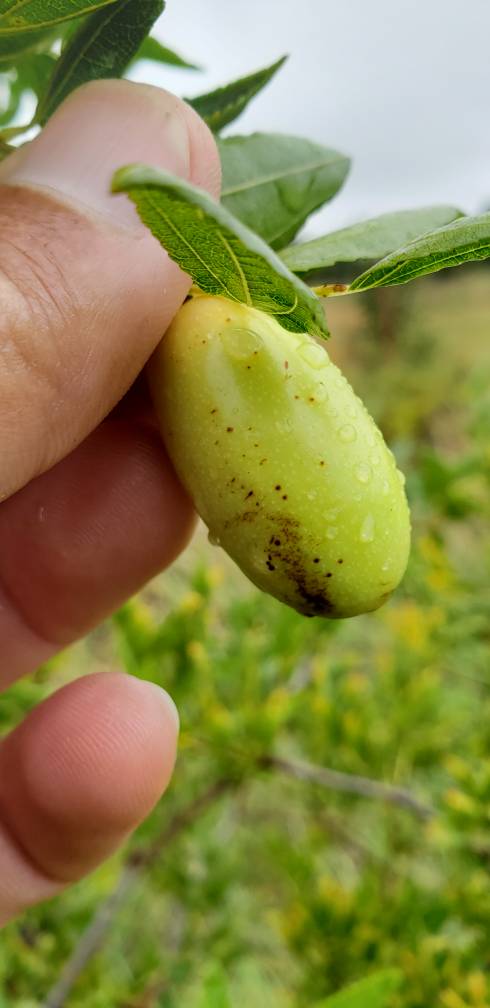
Sent from my SM-N960U using Tapatalk

Sent from my SM-N960U using Tapatalk
yoderjac
5 year old buck +
Yep, they are pretty weird. If you scroll back up in this thread, you will see that I took root cuttings from them to start new trees and the root cuttings fruited in my rootbuilders on my deck before the parent trees did in the field.Glad your jujube are producing and that the turkeys like them. My Tigertooth had several fruits make it to maturity this yr too.
Sent from my SM-N960U using Tapatalk
Thanks,
Jack
yoderjac
5 year old buck +
I was asked in a PM about someone that has GA 866 Jujube trees that are 7 years old and have not produced. I don't have a great answer, but here are some possible ideas if others are having issues with Jujube production:
- The variety you planted will not fruit in your location (I've seen discussion of how some varieties don't produce fruit in high humidity environments).
- The variety you planted is not self-fruitful. This would not explain why you have not seen them bloom.
- They simply are not mature enough to fruit.
Here is a good thread on jujube production: https://growingfruit.org/t/jujube-fruit-set-if-you-dont-have-hot-dry-summers/515
There is a comment on the first page of this thread about reports of folks having issues getting GA 866 variety to produce.
Thanks,
Jack
- The variety you planted will not fruit in your location (I've seen discussion of how some varieties don't produce fruit in high humidity environments).
- The variety you planted is not self-fruitful. This would not explain why you have not seen them bloom.
- They simply are not mature enough to fruit.
Here is a good thread on jujube production: https://growingfruit.org/t/jujube-fruit-set-if-you-dont-have-hot-dry-summers/515
There is a comment on the first page of this thread about reports of folks having issues getting GA 866 variety to produce.
Thanks,
Jack
bigbendmarine
5 year old buck +
Live about 30 miles from Just Fruits, have visited them many times, and done fair share of business with them as something always captures my eye when there. Really fun place to visit. Believe it changed hands about a year ago. Hope it continues to do good business in the future, as it's nice having a place so focused specifically on fruits versus general landscaping plantings.I'm not sure how old the bare root trees were when I planted them. They came from Just Fruits and Exotics in Florida and are tigertooth variety.
yoderjac
5 year old buck +
Live about 30 miles from Just Fruits, have visited them many times, and done fair share of business with them as something always captures my eye when there. Really fun place to visit. Believe it changed hands about a year ago. Hope it continues to do good business in the future, as it's nice having a place so focused specifically on fruits versus general landscaping plantings.
Yes, I recall seeing them up for sale and remember them changing hands. I'm not sure how the propagate their tigertooth on their own roots. If you visit again perhaps you can poke around. I'm not sure if they are growing them from seed or using root cuttings or propagating them with some other method. I had no success propagating them with dormant cuttings. I've had some success digging up root cuttings and starting trees from them and I can dig up suckers with some roots and get them to grow as new trees. I have not tried to grow any from seed. In general, Jujube are grafted to wild rootstock but these Tigertooth are on their own roots. Evidently, in general, they say jujube grown from seed produce poor quality fruit. However, since these Tigertooth are self-pollinating, I would presume seedling would be pretty similar to the parent. I've been thinking about trying it with tigertooth. By the way, they were the only place I could find tigertooth grown on their own roots.
Thanks,
Jack
chickenlittle
5 year old buck +
Jack - Can you summarize your experience with Jujube's and how and where they might fit into a wildlife planting and deer?
I need something to think about on the deerstand this year. Been thinking about hybrid hazelnuts and direct seeded chinkapins. I don't know enough about Jujube to decide whether to add a handful or not. I'd be planting zone 6 in central PA.
I need something to think about on the deerstand this year. Been thinking about hybrid hazelnuts and direct seeded chinkapins. I don't know enough about Jujube to decide whether to add a handful or not. I'd be planting zone 6 in central PA.
Catscratch
5 year old buck +
My Tigertooth grows like crazy but hasn't produced much fruit yet... but neither have the crabs and pears I planted at the same time. They are still young trees. I have no idea if wildlife will like them but I absolutely enjoyed the few I've eaten. Cool looking tree also. Southern KS, zone 6b.
Sent from my SM-N960U using Tapatalk
Sent from my SM-N960U using Tapatalk
yoderjac
5 year old buck +
Jack - Can you summarize your experience with Jujube's and how and where they might fit into a wildlife planting and deer?
I need something to think about on the deerstand this year. Been thinking about hybrid hazelnuts and direct seeded chinkapins. I don't know enough about Jujube to decide whether to add a handful or not. I'd be planting zone 6 in central PA.
Sure. I consider Jujube an experimental wildlife tree, but I'm coming to think of it as useful long-term tree for some wildlife applications. I got the idea from an article David Osborne published in Quality Whitetail magazine. You can look that up for general information on Jujube. I selected Tigertooth because of the later in-season drop as well as the fact that it was supposed to be self-fertile. With some varieties, you need to have have multiple varieties that bloom at the same time.
It took quite a few years for mine to produce fruit, but now that they are producing, they are pretty consistent. With the late cold snap this spring, I got no chestnut production and OK persimmon production. My tigertooths produced pretty well. I started with a half dozen trees. A couple got stunted. I think it was gly drift so I replanted them the following year. I eventually regrafted these over to other varieties, but they did not do well. They are still alive, but not growing or producing like the Tigertooth.
I've taking root cuttings and successfully propagated trees, I've also dug up suckers. In both cases, I found trees will produce fruit on my deck if grown in rootmakers. I'm told it is because of the root restriction. It took my bare root trees many years to produce. When I plant them in the field, they don't grow well. I have not protected them, so I'm thinking it is browse pressure. I will protect the next few I plant. I have not tried to grow trees from seed, but I plan to do so this year.
Deer love the fruit and browse the tree which surprised me because they are a bit thorny which I thought might provide protection. Turkey eat it as well. I've seen them fly up to grab fruit or knock it down and then fight over it on the ground.
I bought mine from JustFruitAndExotics in Florida before they changed hands. They were grown on their own roots. This is important in a wildlife setting as they tend to put up suckers and the roots can sucker quite some distance from the tree. Most grafted jujube are grafted to wild (or sour) rootstock. It evidently does not produce the quality or quantity of fruit that the grafted variety produces. It tends to sucker. This is not a problem if you keep the area mowed, but in a wildlife setting a field could get abandoned and not mowed. You would end up with a thicket of thorny trees with little if any fruit. By buying tigertooth grown on their own roots, I avoid having thickets of wild jujube. They still sucker, but the suckers will produce the same fruit as the parent.
I made the mistake of amending the holes when I planted these bare root trees. My soil is heavy clay. When the trees got larger, some blew over. I found the roots had not infiltrated the clay and stayed in the amended hole. I ended up righting the trees that blew to an angle, staking them, and then mounding native soil over the roots. This seemed to work. I had a couple that did not blow askew, and I mounded native soil so they don't. They are my best producers although some that were righted are now producing.
I can't speak to zone 6b. They do seem to leaf out later than most trees in my area, so I doubt a zone or two would have a major affect, but I can't speak to zone hardiness from personal experience beyond 7A.
I'm glad I planted them, and I'm beginning to consider Tigertooth a successful long-term wildlife planting for my area. They are not quick to fruit. I'd classify them along with persimmon seedlings in that aspect.
Thanks,
jack
yoderjac
5 year old buck +
I happened to hunt the field where I planted the Jujube trees tonight. It has been a couple years since I posted this. I'm now completely sold on Tigertooth Jujube for deer. All the fruit is gone by now and I saw nothing. But I had time to contemplate these trees. Once they started producing fruit, they have been consistent produces every year. It take quite a while for them to produce. They have had zero maintenance.. No fertilizer, no pruning or anything. We had a heavy mast crop the year, and deer are only using our food plots after dark with the bounty of quality food out there. There were no jujube left on the ground. They had all been eaten. I'm not sure how much were eaten by deer and how much by turkey. I've watched turkey fly up into the tree to knock them down and then fight over them on the ground before. I've sure other critters get their share as well, but nothing seems to bother them until they are ripe in Oct and Nov.
I'm beginning to consider them to be very similar to persimmon. Slow to develop, but require no care, and once they start producing, they seem to be even more reliable than persimmons in my area.
Thanks,
Jack
I'm beginning to consider them to be very similar to persimmon. Slow to develop, but require no care, and once they start producing, they seem to be even more reliable than persimmons in my area.
Thanks,
Jack
Catscratch
5 year old buck +
My Tigertooth produced 1 fruit to ripe this yr. I greedily ate it myself. Looking forward to it producing some heavy crops.
yoderjac
5 year old buck +
It sure took mine a long time to fruit. I'm glad I planted them when I did!My Tigertooth produced 1 fruit to ripe this yr. I greedily ate it myself. Looking forward to it producing some heavy crops.
yoderjac
5 year old buck +
Good info jack thanks for sharing I’ve considered trying Jujube.
I'm not sure which varieties are well adapted for which regions. I know Tigertooh (one of the self-fruitful vaarieties) is doing well in zone 7A. What I like most is production without maintenance. No disease issues or pest issues at all. My only issues with them were self-created. Back when I planted them, I did not understand my clay soil well. I dug large holes and amended the soil. They grew great, but there was no need for the roots to leave the amended soil and penetrate the heavy clay. When they got larger, we had a wind storm that blew several over. I ended up having to right them and stake them. I ended up mounding native clay soil over the amended soil to help anchor them. That event set production in one of the trees back a bit, but it is now recovered and producing heavily.
I tried grafting a couple over to other varieties. The grafts took, but those trees never really grew well or produced. The Tigertooth are on their own roots, not grafted.
Thanks,
Jack
Catscratch
5 year old buck +
Do some research. Some of them are considered invasive due to how they root sucker. The importance of the Tigertooth is that it's on it's own roots and doesn't spread or make thickets. Most (if not all) of the other improved varieties are on a rootstock that is known to sucker heavily. The suckers won't match the grafted for fruit so they may become a huge pain. Just a small word of caution before anyone jumps in.Good info jack thanks for sharing I’ve considered trying Jujube.
Similar threads
- Replies
- 59
- Views
- 10K
- Replies
- 63
- Views
- 10K
- Replies
- 122
- Views
- 11K
- Replies
- 104
- Views
- 10K

